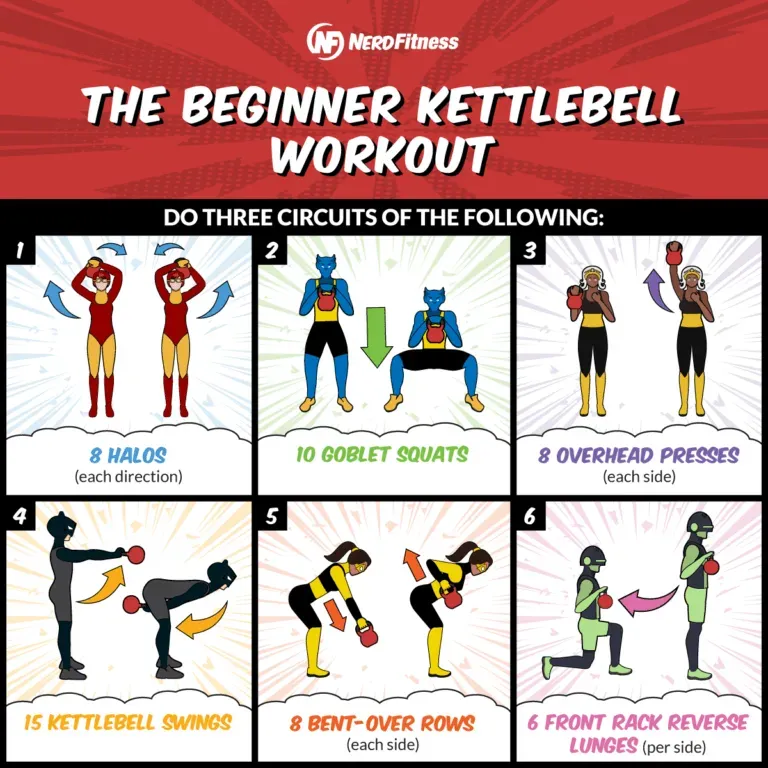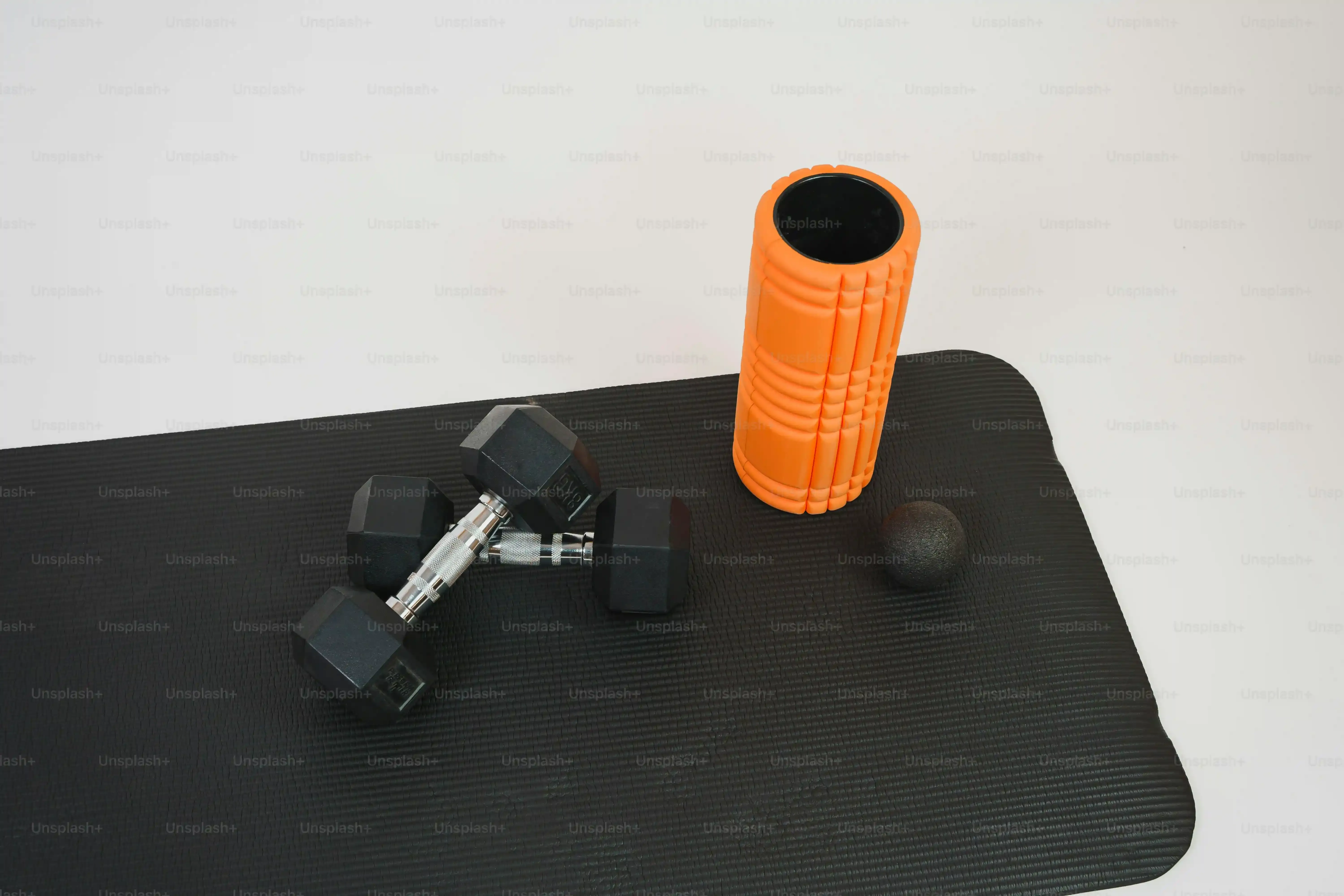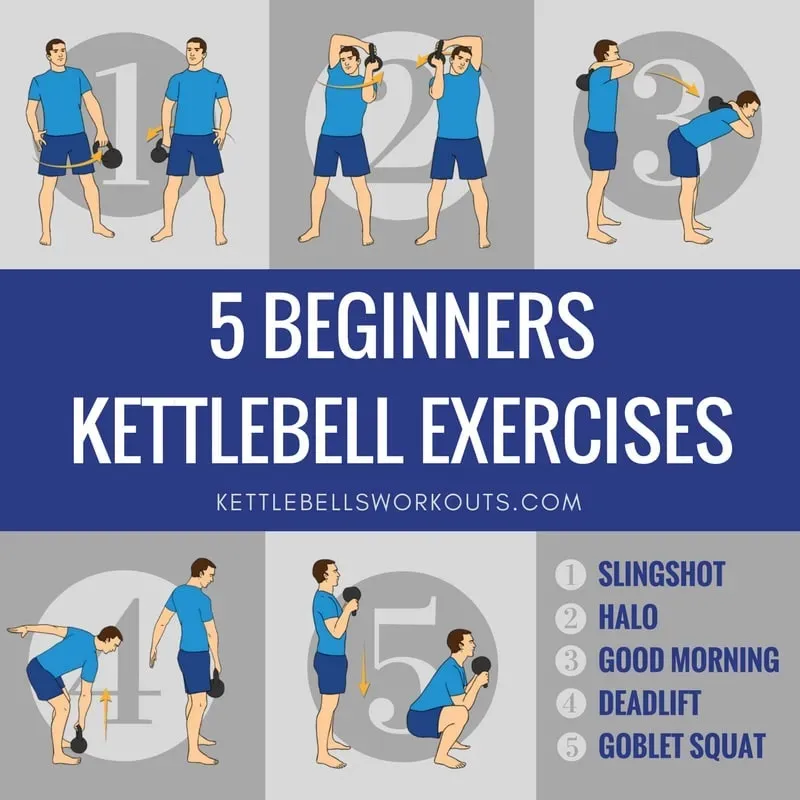Table of Contents
Thinking about getting into shape but feel overwhelmed by fancy gyms or mountains of equipment? Maybe you've seen those cannonball-looking things with handles and thought, "Nope, that's not for me." Well, hold on a second. That 'cannonball' is a kettlebell, and it might just be the most effective, no-nonsense tool for building strength and getting a solid sweat session in a short amount of time. You don't need a dedicated gym space or hours to spare. What you *do* need is a plan, and that's exactly what we're laying out here: a straightforward, effective beginner workout with kettlebell that you can actually do. We'll cut through the noise, show you the essential moves, help you pick the right starting weight (it's probably lighter than you think), and get you moving. Forget complicated routines. This is about starting simple, building a foundation, and seeing what a single piece of equipment can do. Ready to ditch the excuses and pick up some iron? Let's get into it.
Why Start a Beginner Kettlebell Workout?

Why Start a Beginner Kettlebell Workout?
Efficiency in a Single Tool
Let's be honest. Finding time to work out is tough. Juggling work, life, and everything else leaves little room for hour-long gym sessions. That's where a beginner workout with kettlebell shines. You don't need a rack of dumbbells, resistance bands, or complex machines. One kettlebell, a bit of space, and about 20 minutes is all it takes to hit multiple muscle groups and get your heart rate up. It's the ultimate minimalist approach to fitness that still delivers real results.
More Bang for Your Buck (and Time)
Kettlebell training isn't just about lifting weight up and putting it down. The unique shape and off-center weight distribution force your body to work harder to stabilize, engaging core muscles you didn't even know you had. Moves like the swing combine strength and cardio, building explosive power and endurance simultaneously. It's a dynamic, full-body approach that's hard to replicate with traditional gym equipment, making a beginner workout with kettlebell incredibly effective for overall fitness.
- Builds functional strength for everyday tasks.
- Improves cardiovascular health.
- Enhances core stability and balance.
- Develops explosive power.
- Requires minimal space and equipment.
Building a Foundation for Progress
Starting with a beginner workout with kettlebell isn't a dead end; it's a gateway. The foundational movements you learn – like the goblet squat and the swing – translate directly into more advanced kettlebell techniques and even other forms of lifting. Mastering the basics with a lighter weight allows you to build proper movement patterns and confidence. It’s about quality over quantity initially, setting you up for sustainable progress and avoiding injury down the line. Think of it as learning to walk before you run, but you're learning to swing heavy metal instead of just putting one foot in front of the other.
Essential Moves for Your Beginner Kettlebell Workout

Essential Moves for Your Beginner Kettlebell Workout
Mastering the Goblet Squat
Alright, so you've got your kettlebell. Now what? We start with the absolute basics, the cornerstone of almost any strength program: the squat. But with a kettlebell, we do the goblet squat. Holding the bell by the horns (the sides of the handle) against your chest helps keep your torso upright and acts as a counterweight, making it easier to get into a good squat position. It's a game-changer for grokking proper squat form without folding like a cheap suit. Stand with your feet about shoulder-width apart, toes pointed slightly out. Hold the kettlebell tight. Now, imagine you're sitting back into a chair, keeping your chest up and back straight. Go as low as you comfortably can while maintaining good form, then push through your heels to stand back up. Simple, effective, and crucial for your beginner workout with kettlebell.
Swinging into Power (Safely)
the kettlebell swing. This is the move most people picture, and for good reason – it's incredibly powerful. But it's *not* a squat with an arm raise. It's a hip hinge. Think of it like a dynamic deadlift. Stand over the bell, hinge at your hips (like bowing), grab the handle with both hands. Hike the bell back between your legs like you're snapping a football. Then, forcefully and quickly extend your hips and knees, using that power to drive the bell forward and up to chest height. Your arms are just ropes guiding the bell; the power comes from your hips and glutes. Don't lift with your shoulders or back. It feels awkward at first, like trying to pat your head and rub your belly, but once you get the hip drive, it clicks. This move is central to a solid beginner workout with kettlebell for building explosive strength and conditioning.
- Goblet Squat: Builds lower body strength and teaches proper squat mechanics.
- Kettlebell Swing: Develops explosive hip power and acts as cardio.
- Halo: Improves shoulder mobility and warms up the upper body.
- Overhead Press: Works shoulder strength and core stability.
- Bent-Over Row: Strengthens back muscles.
- Front Rack Reverse Lunge: Challenges balance and leg strength.
Building Upper Body and Stability
It's not all about the lower body and hips. We need to hit the upper body and build some core stability too. The Kettlebell Halo is a great warm-up and shoulder mobility drill. Hold the bell by the horns, close to your chest. Slowly circle it around your head, like drawing a halo. Go one way for a few reps, then reverse. Keep your core tight so you're not swaying everywhere. For pressing strength, the Overhead Press is key. Clean the bell to the front rack position (resting on your forearm, bell against your bicep/shoulder). Press it straight overhead, keeping your core braced. Lower it with control. These moves, along with something like a Bent-Over Row to hit your back, round out a comprehensive approach for your beginner workout with kettlebell, making sure you're building balanced strength from head to toe.
Picking Your First Kettlebell and Planning Your Beginner Workout

Picking Your First Kettlebell and Planning Your Beginner Workout
What Weight Should You Start With?
Alright, you're convinced. You need a kettlebell. But walk into a sporting goods store or browse online and you're hit with a wall of options: 8kg, 12kg, 16kg, even heavier. What's the right starting point for your beginner workout with kettlebell? The common wisdom, and it's pretty solid, is that women often start with 8kg or 12kg, and men with 12kg or 16kg. But honestly, it depends entirely on *your* current strength level. If you haven't lifted anything heavier than a grocery bag in years, maybe an 8kg is smart. Can you comfortably do a bodyweight squat? A 12kg might feel right for swings but heavy for presses initially. The key is to pick a weight you can control for the foundational movements like the goblet squat and halo, but which still feels challenging for the dynamic moves like the swing after a few reps. Don't ego lift here; nobody cares how much your first kettlebell weighs. Start lighter, nail the form, and you'll progress faster than trying to wrangle something too heavy.
Think about it this way: you're learning a new skill, not just lifting a heavy object. Trying to learn the kettlebell swing with a weight that pulls you forward or makes your back round is just asking for trouble. A slightly lighter bell lets you focus on the *snap* of the hips and keeping a straight back. You can always get a heavier one later. Trust me, you'll feel plenty challenged even with a moderate weight when you do enough reps and sets in your beginner workout with kettlebell.
Kettlebell Quality Matters (Seriously)
Not all kettlebells are created equal. You'll see cheap ones with rough handles, uneven finishes, or awkward shapes. Avoid them. A good kettlebell should have a smooth handle that won't tear up your hands after a few swings. The finish should be consistent, and the bell itself should feel balanced. Cast iron is standard, sometimes with a powder coating. Competition bells are a different beast entirely, but for a beginner workout with kettlebell, a standard cast iron bell is perfect. Just make sure the handle is comfortable to grip with both hands for swings and smooth enough not to cause blisters instantly. It's worth spending a few extra bucks for a quality piece of iron that will last forever and feel good to use.
Ever tried to do swings with a bell that feels like it's actively trying to escape your grip or shred your palms? It's not fun. A good handle makes a huge difference in your ability to focus on the movement itself rather than just holding on for dear life. Look for reviews that mention handle texture and overall construction. Your hands will thank you.
Putting It All Together: Your First Beginner Workout with Kettlebell Plan
kettlebell acquired? Check. Now, how do you actually string these moves together into a beginner workout with kettlebell? Keep it simple. Start with a warm-up – maybe some light cardio like jogging in place, arm circles, and hip mobility drills. Then, move into the kettlebell-specific warm-ups like the halo. For the main part of the workout, pick 4-6 exercises. The goblet squat, swing, bent-over row, and overhead press are a great starting point. Perform 2-3 sets of 8-12 repetitions for each exercise (or 10-15 reps for swings, focusing on power). Rest for 60-90 seconds between sets. Don't rush through it. Focus on controlled movements and proper form. Finish with a cool-down and some stretching. Aim for 2-3 sessions per week, allowing a rest day in between. This simple structure is effective for building strength and getting comfortable with the kettlebell.
Here’s a sample structure you could follow:
- Warm-up (5 minutes: light cardio, dynamic stretches, halos)
- Goblet Squats: 3 sets of 10 reps
- Kettlebell Swings: 3 sets of 15 reps
- Bent-Over Rows: 3 sets of 10 reps per side
- Overhead Press: 3 sets of 8 reps per side
- Cool-down (5 minutes: static stretches)
This isn't rocket science. It's about consistency and getting comfortable with the movements. Your beginner workout with kettlebell should feel challenging but not impossible. As you get stronger, you can increase reps, sets, or eventually, the weight.
Moving Beyond the Beginner Kettlebell Workout

Moving Beyond the Beginner Kettlebell Workout
Increasing the Challenge
So, you've been hitting your beginner workout with kettlebell consistently for a few weeks. The 12kg doesn't feel quite as terrifying, and you can pump out those goblet squats and swings without feeling completely gassed after the first set. This is where you start thinking about scaling things up. Progress isn't always about jumping to the next weight category immediately. You can increase the number of sets or reps you do. Maybe you add an extra set to each exercise, or push for 15 reps on the presses instead of 8. You could also shorten your rest times between sets. These are simple ways to make that same weight feel challenging again and keep the gains coming without needing to buy a bigger bell right away. It forces your body to work harder under fatigue, which is a different kind of strength.
Adding Complexity and New Moves
Once you're solid on the foundational moves from your beginner workout with kettlebell – the squat, swing, press, row, halo, lunge – you can start introducing slightly more technical exercises. Think about the clean, which transitions the bell from the floor or swing into the front rack position. Or the snatch, which is a ballistic move taking the bell overhead in one fluid motion. These require more coordination and timing, building a different kind of power and skill. You could also explore single-leg variations or exercises that challenge stability even further. It's like graduating from basic arithmetic to algebra; the principles are the same, but the application is more complex and rewarding. Don't rush into these; spend time watching tutorials and maybe even getting some coaching to nail the form before loading them up.
What's next after mastering the basics?
- Increase reps or sets with your current weight.
- Decrease rest periods between sets.
- Introduce the Kettlebell Clean.
- Learn the Kettlebell Snatch.
- Explore single-leg exercises like single-leg deadlifts.
- Try complexes (stringing several exercises together without putting the bell down).
Wrap Up: What Comes After Your First Swings?
So, you've tackled the beginner workout with kettlebell. You've learned the basic movements, felt the burn (hopefully in the right places), and maybe even figured out which end is up on that piece of iron. This 20-minute routine isn't the finish line; it's just the starting gun. You've built a foundation, getting comfortable with the feel and flow of kettlebell training. Consistency is your next mission. Keep practicing these fundamental moves, focusing on technique over lifting heavy just yet. As you get stronger and the movements feel more natural, you can think about adding a few more reps, another set, or eventually, moving up in weight. This isn't about becoming a kettlebell guru overnight, but about building a sustainable habit that gets you stronger, more mobile, and feeling better. Stick with it. The bell's not going anywhere.